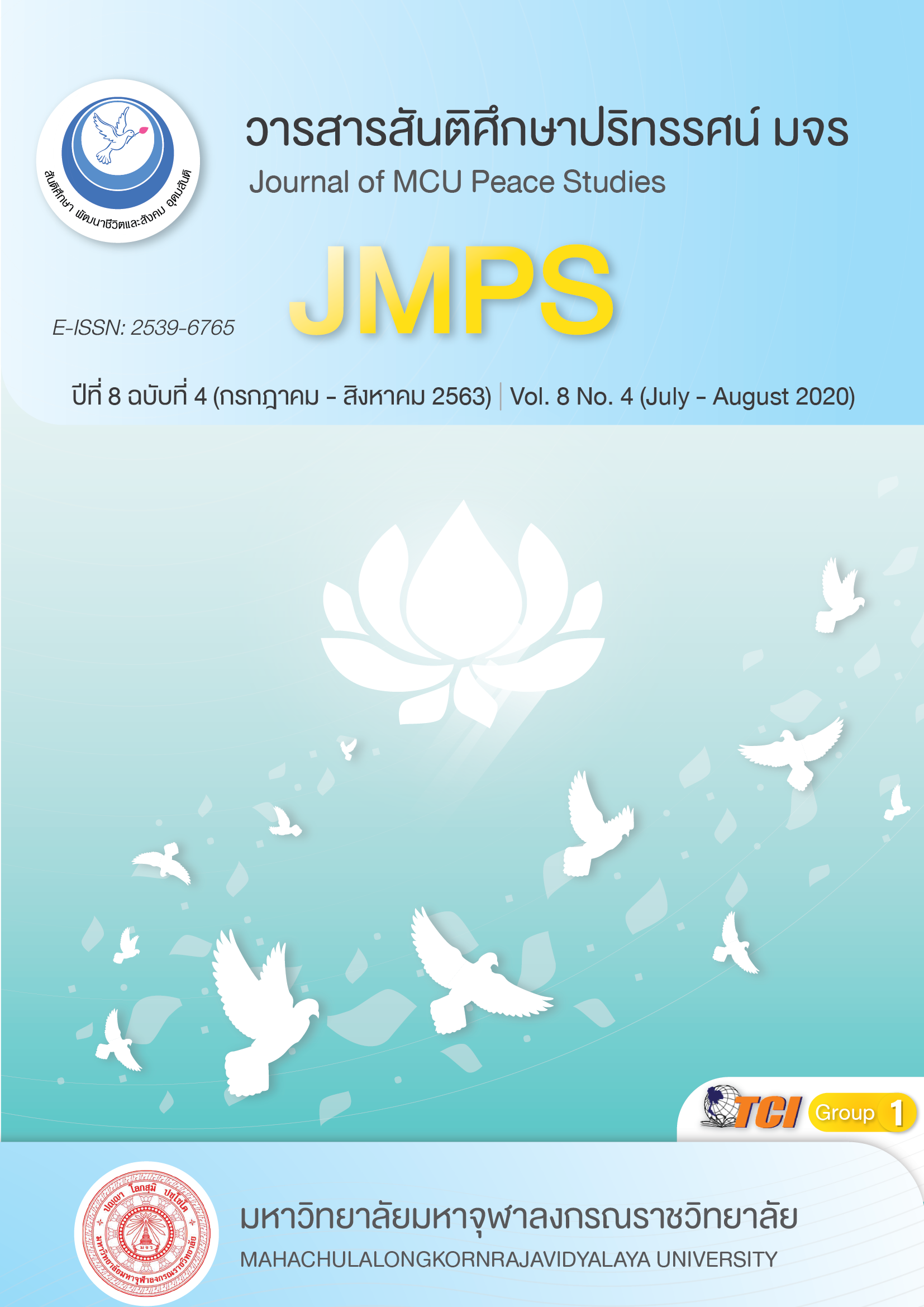Analytical Study of mind in Theravara Buddhist Scriptures
Main Article Content
Abstract
This research aimed to: 1) to study the concept of mind (citta) in Theravada Buddhism, 2) to study the behaviors of mental qualities (cetasikas), and 3) to analyze the ethical values gained from the proper understanding on the concept of mind in Theravada Buddhism. This is a documentary research conducted by studying Tipiṭaka, commentaries and related documents. The research results were found as follows: 1) In Abhidhamma Piṭaka, Aṭṭhasālinī Aṭṭhakathã, Visuddhimagga, Abhidhammāvatāra, Abhidhammatthasaṅgaha, AbhidhammatthavibhāvinīTīkā, Paramatthadīpanī and ParamatTha- jotika texts, the 89 or 121 types of mind (citta) in details are expounded. All are named by its functions and occurred characteristics where they are obviously categorized as causal mind, resultant mind and neither causal nor resultant mind in a total of 4 levels, namely, (1) Preliminary level, (2) Middle level, (3) High level, and (4) Highest level. As regards the Suttanta Piṭaka, mind appeared only as Citta, Mano and Viññãṇa, but no number of minds was found. 2) The mind expresses good, bad or neutral behaviors due to the 52 mental qualities (cetasikas) which are the foundation of mental behaviors. 3) The mental develop-ment for achieving ethical values means the enhancement of the preliminary level of mind for calmness through sustaining the mental tranquility based on meditation exercise by which the sustainable mental happiness could be actualized.
Article Details
Views and opinions expressed in the articles published by The Journal of MCU Peace Studies, are of responsibility by such authors but not the editors and do not necessarily reflect those of the editors.
References
Anagarika, G. (1993).Buddhist Reflections. Motilal Banarsidass Publishers Private Limited Delhi.
Bhumibalo Bhikkhu foundation. (1993). Thai Abhidhammāvatāra.Bangkok: Bhumibalo Printing.
Bhumibalo Bhikkhu foundation. (2003). Abhidhammatthasaṅgaha, Abhidhammattha vibhāvinīTīkā. Bangkok: Bhumibalo Printing.
Bhikkhu Bodhi, (2006). Comprehensive Manual of Abhidhamma.Sri Lanka: Ruchira Printing.
Chantavanich,S. (2010). Qualitative Research Methods.(17th ed.). Bangkok: Chulalongkorn University.
Iddhivaro, T. et al. (2011). A Comparative Study of Bhavanga-citta in Buddhism and unconscious mind in psychoanalytic theory west. Research Project funded by Mahachulalongkornrajavidyalaya University.
Mahachulalongkornrajavidyalaya University. (1996). Thai Tripitakas. Bangkok: MCU Press.
Mahachulalongkornrajavidyalaya University. (2017). commentaries:Thai version. Bangkok: MCU Press.
Mahachulalongkornrajavidyalaya University. (2012). Visuddhimagga:Thai version.Bangkok: MCU Press.
Nyanaponika thera. (1962). The Heart of Buddhist Meditation. Printed and bound in Great Britain by The Guernsey Press Co. Ltd, Guernsey Channel Islands.
Nyanatiloka Mahāthera. (2008). Guide through the Abhidhamma Pitika.Sri Lanka: Ajith Printing.
Phradhammpala, P. (2009).Paramatthadīpanī. translated by Phrakandasaraphivong.Bangkok: Phrayoonsanthai Printing.
Piyananda, D. (1974). The Concept of Mind in Early Buddhism. (Doctoral Dissertation). Graduate School of Arts and Sciences: Catholic University of America. Washington.
Phra Brahmagunabhorn. (2015). Dictionary of Buddhism. Bangkok: Pali Dhamma Printing.
Saddhammajotika, S. (1997). Paramathajotika vithisangaha chapter 4. Bangkok: Phipayavisutti Printing.
Saddhammajotika, S. (2006). Mahapattāna scripture. Bangkok: Phipayavisutti Printing.
Sorado, S. (2009). handbook Vipassana Meditation. Bangkok: SMK Printing.
Vutthikaro, S. (2008). The Cittamātra of Yogācāra Buddhism: An Analytical Study Based on the Concept of Citta in Early Buddhism. (Doctoral Dissertation). graduate school: Mahachulalongkornrajavidyalaya University. Ayutthaya.
Watters, D. (1199). Superconciousness A guide to meditation. North Delhi: Motilal Banarisdass Printing.

